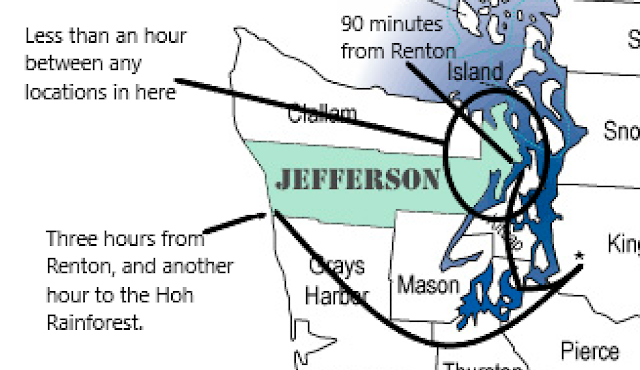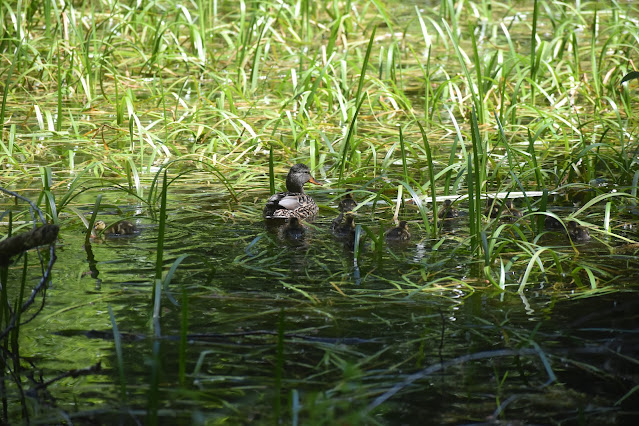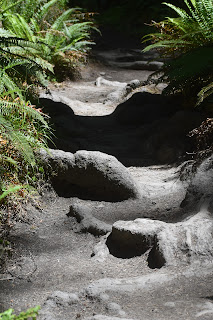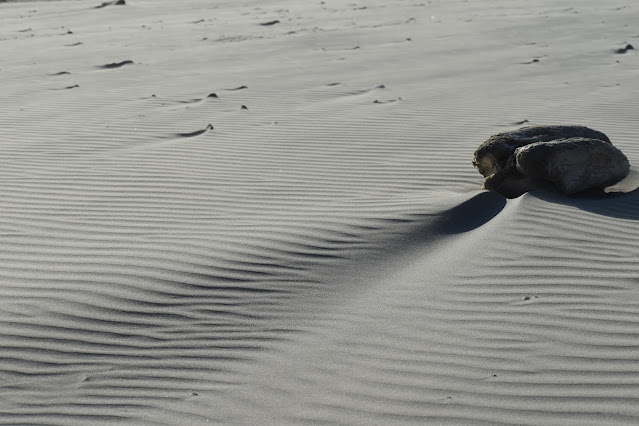Jefferson County is big, and it is small. It is close, and it is far.
 |
| Also, the entire middle of the county is impassable by motor vehicle because of the Olympic Mountain Range |
This had made Jefferson County feel just as small, or smaller, than Kitsap County so far this year. It's four times the land area, but I'd been able to find over 160 species in the little circle of East Jefferson. But things are warming up, the mountains are becoming reachable, and I'd had some birds on the coast that I needed to pursue.
 |
| Oops |
It was a little cloudy in the morning. Not unwelcome on a long June day that would include some hiking. My brain. . . also cloudy, it would seem. As I drove down I-5, I naturally turned off at the Tacoma Narrows bridge, a route I've taken many times this year into Kitsap and Jefferson Counties. Grumbling, I took an early exit and returned back over the bridge, paying my $5.50 for the mistake, and continued down to Olympia to catch the 101 to the coast.
I'd have hoped to get out a little earlier. . . and maybe to not have gone on that little detour. Early morning isn't absolutely crucial, but I had at least one bird in mind where it sure may have helped.
Ruffed Grouse
I'd been a few places this year where I felt like Ruffed Grouse were possible. Up trails and gravel roads, many of them passing through good habitat - forested patches with good vegetation for food, but sparse enough vegetation to let one of these little chickens walk around easily. The occasional fallen tree isn't bad either - they apparently prefer to perch on them for their drumming display.
 |
| wrong side of the sign |
Sunrise passed as I drove 101 approaching Aberdeen. Turning north towards Jefferson, the birds had already started chirping. And then, on the side of the road, just as predicted. Boom. Ruffed Grouse.
In Grays Harbor County. lol.
I was still happy to see the bird. I think it was the 149th species I'd seen in Grays Harbor in my life. That number will lose meaning quickly when I finally get around to a Grays Harbor big year! I think there have been days in May where people have found over 160 species there. Spoiler, though, this was the last Ruffed Grouse I saw all day!
Into Jefferson
 |
| Foxglove - nearly everywhere |
Scads of other birds called from this little stretch, just past a bridge traversing the Queets. Warbling Vireo, Black-headed Grosbeak, Black-throated Gray and Wilson's Warblers, among others.
South Beach Campground
Bird-wise, it felt pretty quiet. I saw some distant Pelagic Cormorants on the waves, and not much more. I was packing up the scope when a tight line of 3-4 Brown Pelicans (164) flew past. Other black dots flitted by in the distance, and I packed up even more quickly.
You see. . . LBJ's, little brown jobbies. . . that's the nickname for sparrows and their kin. Early in my birding, these provided quite a few identification headaches! But between habitat, calls, and (if necessary) field marks, these have become easier over time. I don't think there's a similar cute acronym for alcids. LBD for Little Black Dots? But. . . it doesn't carry the same familiarity as LBJ. So maybe DVDs for Distant Vexatious Dots? Yes. That'll do. DVDs. I ran from them, rather than pretend to pore over them for field marks at a mile distance.
Beaches
 |
| Finally, a pure Western Gull |
The search for a pure Western Gull has been all year in coming. The thing is, Puget Sound is teeming with Glaucous-winged Gulls; Western Gulls are found out on the coast; and in between, in places like Jefferson County, most of the gulls seen are just mutts - hybrids of the two species. So, the dark mantle and jet-black primaries on this bird were a welcome sight indeed.
I also stopped at Ruby Beach, spied some Pelagic Cormorants and some Pigeon Guillemots, but not much more.
I felt the time ticking, and did hope to get to the Hoh Rainforest, especially in hopes of finding some Ruffed Grouse along the road (ha).
But sometimes, you have to follow signs, and I saw one pointing me to the world's largest cedar.
The Duncan Cedar
 |
| The Duncan Cedar |
The tree itself. . . I'll admit I had a moment of silence as soon as I saw it. To be fair, I was actually looking at dead wood. But apparently, cedars can just do this. How many 1000-year-old trees have I seen? So, I'm okay believing that. Up near the top of the tree, I could see the greenery demonstrating its non-deadness. Over fifty meters high. Nearly twenty feet in diameter. This was a lot of tree. The largest tree (period) in our state, in fact.
Interestingly, on the back side of the tree there were a few planks allowing a person to climb a few feet up along its trunk. I did so, and just leaned back against the old thing for a few minutes. Along the trunk, there were occasional bits of initials carved into it. There was even a spot where my best guess tells me a saw had been taken to the tree. But it's still there.
I admired its perseverance. After all of these years, and all of the little dents, dings, windstorms, etc., that it should still be reaching upward, taking in sunlight and putting out oxygen for us (among other things. . . I know :D). Interesting to think that by now, any human on earth is likely to have taken in oxygen atoms put out by this tree. Keep on keeping on, big guy.
 |
| Salal - less than 1000 years old |
 |
| Up |
 |
| Someone gave up on this murder plot |
A long road to Hoh
Just imagine, spending a year in Jefferson County without a visit here! Four of the most intact pieces of temperate rainforest in the lower 48 - The Bogachiel, Hoh, Quinault, and Queets rainforests - are found entirely or at least partially in Jefferson County. Of them, the Hoh is by far the most visited, meaning of course that there were all the more Ruffed Grouse sightings on eBird drawing me in (ha).The road up gave me a few places to stop. One of the first was at the Peak 6 Adventure Store. Not far up the road, this store was situated against a nice big meadow. I had vague hopes for a Willow Flycatcher here in this open habitat, so I parked behind the store and looked and listened. Western Flycatchers were another species that I came across nearly everywhere I went. They were one of the more prominent species here, along with common birds like Dark-eyed Juncos.
 |
| Black Swift |
Above the meadow, several Violet-green Swallows were circling, as well as a pair of Black Swifts (166). These are code 3 birds in Jefferson County; They're seen annually but are tough to find. I had missed a few days of them visiting Short Farm south of Chimacum back in May, and I really didn't have them on my radar for this trip. They circled, fairly low at times, and occasionally would give a series of rapid flat chip calls. This was a great find for the year list. The goal of two hundred species still felt pretty distant. So many birds are just going to be tough to find! So, a little serendipity here and there is a welcome thing.
I purchased my Jefferson County mug in the gift shop. It's not my usual mode for getting mugs. My preferred method is to stumble on them in thrift shops, but this one was lovely, and it was clearly designed *for* the Hoh, not just a generic mug with trees and the word "Hoh" on it, replaced by some other word in some other park in some other state. Someday, I'll collect one from each county in the state. Big time goals.
 |
| My vehicle, incidentally, is now "The Cackler" Hopefully this picture justifies this decision. |
Hoh Rainforest
I finally got to the gate, paid for my annual National Parks Pass (guess I need to use it now!), and continued to the backpackers parking area.
Canada Jays drifted in and out of the trees to ask visitors questions, and ponds near the parking areas held a family of Mallards. Also of note, the flycatcher chorus now included the occasional Hammond's Flycatcher, giving a gravelly call from the canopy of trees.
I snuck out from under that canopy and into the visitor center. Looking over the maps, I could see numerous small loop trails, including the Hall of Mosses loop, which I know I've walked once or twice. One trail was a good bit longer and a one-way kind of situation: The Hoh River Trail. I wasn't sure how far I'd go on it, but I decided to take it.
I don't know that June is peak moss season, but there were definitely some enormous trees sporting a good bit of it!
I'll admit, I wish I'd done some work to learn what mistletoe infection looked like. Apparently, it appears on some of these old-growth trees, providing habitat for Spotted Owls. Not that I expected any on this walk!
There are, to be clear, Spotted Owls on the Olympic Peninsula. The remaining tracts of old-growth forests, as well as fish and wildlife programs to . . . thin. . . invasive, competing Barred Owls has given them a chance to hold on a little bit longer.
So why not here? It's only a guess. Spotted Owls don't appear on eBird checklists. But, that said, there are definitely birders in the state who know where the Spotted Owls are. It's often folks with long county lists, long state lists, full access to eBird checklists (as reviewers), etc. And there just aren't many checklists from those folks from this area. It might be an incorrect hunch, but it just meant my mind wasn't on owls.
For my year, there's a short list of owls that I'm missing: Barn, Western Screech, Spotted, and. . . Short-eared (? uncommon enough to not be considered missing). Out during the day in the rainforest, it wasn't really the time to expect any of those. No reason to whistle for Northern Pygmy Owls or for Barred - either of which might be agitating to Spotted anyway. They're out there, but if I'm going to hear them, it's not going to be from calling, personal connections, etc. Just spit-balling, spending a lot of time in good places, looking for breadcrumbs (like the mistletoe), listening, and luck.
 |
| Wilson's Warbler |
I've come across them twice before in these years in other counties, and by surprise both times. I wish that it had not been! Both times, I had been calling for other owls, and got responses from Spotties. And I step through the logic of this. . . Not knowing where the owls are is good, because it protects them from people coming out and calling for them.
And yet. . . if I'd have known there were Spotties in those areas, I wouldn't have been calling for *any* owls. I don't have playback and can't/don't really do a Spotted Owl call myself. Maybe the other owl calls I do are a problem, maybe they're not? But in the end, the Jefferson plan for me for the rest of the year is easy peasy: Go to good places in the Olympics at night; Don't call; Listen.
On the trail today, I listened. . . and picked up Vaux's Swifts and Varied Thrushes. Good V bird habitat. I also got distracted by the river, the plants, the berries.
 |
| wild red huckleberry |
 |
| blue.. huck... You know, I'm not sure. Yummy though, and of course it's in the right family! |
And I chatted with other hikers now and then. One couple coming the other direction had binoculars and a camera, so we did the eyebrow-raise-binocular-point that birders do. "Anything good?"
It seems that the gentleman was on a quest as well, traveling through the states for a few months looking for birds. He'd picked up some good birds in our fair state since his arrival earlier in the week.
"Chestnut-backed Chickadee?"
"Yes! That was one of them."
"Varied Thrush?"
"Not yet on this trip."
*Varied Thrush call*
POINT
"Did you hear something?"
"A Varied Thrush." *another call* "Did you hear that one?"
Both of them shook their heads, so I led them back down the trail. At one point, his wife was hearing them, but he still wasn't. "Are they singing the typical song?" Nice reminder that I'd never heard all that much variety from Varied Thrushes in their singing. Imagine that.
A little farther down the trail, and he started hearing them too. Of course, we came to agreement on the fact that they are amazing birds - both by sight and sound.
I continued back up the trail a little ways, stopping to enjoy warblers a few times. Admittedly, the habitat was quite a few miles away from changing significantly, so I made my return to the parking lot.
A little meandering
I think at this point, Willow Flycatcher, California Gull, and Common Nighthawk were my main targets. In this effort, I kind of tried all of the side roads from North to South, looking for juicy clear-cuts. Dolman Creek Road was one of the first attempts - pretty far north on 101, but still Jefferson. Then Oil City, then a little bit of the Hoh Mainline Road.
Unsurprisingly, I came across an awful lot of White-crowned Sparrows, but not willows, and no bluebirds of any kind. So, I stopped for dinner at Kalaloch Lodge. This was a nice stop! I just had a drink and a bowl of chowder. Both were delicious, and the bar proved to be (as it often is) a good place to chat it up with people. The couple next to me here was from Florida, and conversation wandered from the rainforest to cowbirds.
Brown-headed Cowbirds are birds that parasitize other birds' nests. Eggs are laid in other birds' nests, and the "host" bird feeds the giant cowbird hatchlings, at the expense of their own offspring. Apparently, removing a cowbird egg from a nest is even worse, as the cowbirds will exact revenge on the hosts. But, as the husband informed me, "You can shake the eggs up, and put them back in the nest."
"That. . . is a truly horrible thought. But I can see the logic in that."
From the parking lot, I got some California Gulls (168). These gulls will be increasing in number as we continue into fall.
Nighthawk run
After dinner, my focus was still on clear-cuts, but bird-wise, it was now shifted to Common Nighthawks. I don't think the flycatchers I'd hoped for particularly cared for this brand of clear-cuts, so I pocketed them for another day. Nighthawks though. . .
My stop at the lodge had also allowed me to get on my computer, get some work done, and check for bird sightings. Interestingly, there were very few nighthawk sightings from this side of the mountains. Perhaps they don't like the rain as much as Ruffed Grouse do? But I eventually landed on NF-3000 as my road. Starting from Clearwater Creek Road off of 101, I surveyed the big clear-cut at the junction, then drove to 3000 and took it for... 10 miles? 15? It was a long way up this road, passing much more habitat, and getting closer and closer to sunset.
Olive-sided Flycatchers, Sooty Grouse, Western Tanagers, Western Flycatchers, and so many Swainson's Thrushes could be heard at various stops. It just got more desolate, distant and quiet as I disappeared up into the southern foothills of the Olympics. As soon as I thought it was close enough to sunset I started down, stopping at each site, waiting, and listening.
And then, having been up since 3 in the morning, I fell asleep at one of these stops, waking up on the tail end of civil twilight. I worried that I had missed the birds during their evening feeding, missing them at each stop along the way.
But finally, I reached the very first clear-cut I'd visited, got out, and immediately heard a Common Nighthawk passing overhead. (169)
"Kaching!" I said for Pete, smiled, and headed for home.
I got back a little after 1 AM, and was asleep by 1:30, making it a twenty-two-and-a-half-hour day.
I slept until about 9-10, making it consecutive nights with good sleep. Not bad.




























No comments:
Post a Comment